|
In which I learn the ways of the world. By Zach Hively Did you ever hear the tragedy of Kaspar Hauser?Pull up a chair and I’ll tell you that Kaspar Hauser, the story goes, once wandered onto some Bavarian street as a teenager. This wasn’t in itself notable. Nor were the two letters he carried—one purportedly written by his birth mother in 1812, and the other purportedly written by the old man who had housed Hauser since infancy. “Housed” is too fitting a term. Kaspar had existed lo these many years, so the second letter said, without once leaving the house. Lucky him? Not really. Kaspar never saw the sky. He ate only rye bread and drank only water. He had experienced only enough human contact to learn only the words needed to tell the outside world that he had never experienced human contact. Kaspar Hauser fascinated the world, or at least some nineteenth-century Bavarians, with the murky riddle: What is a human being who never learned how to be human? But like, at all? Now. Let us set aside all the extraneous details of Kaspar’s story. These include the suspicions that he was a habitual liar, that he made it all up, and that he—being a man of the male gender before his brain finished developing one way or another—accidentally killed himself while staging an assassination attempt to re-up his public attention. Not important. What is important is that I, two hundred years later, can answer exactly what happens when a man has been isolated from human society since his youth: He cannot properly load the dishwasher. More to the point: I cannot load the dishwasher. This is not me rehashing the old trope that one person in every relationship loads the dishwasher like a Zen monk on assignment, while the other person loads it like a chipmunk whose parents just got home a day early. The beloved and I both load the dishwasher with great care and obsessive tendencies, thank you very much. But I? I do so with a complete and uncompromised lack of knowledge of how to do so properly. I may disagree with this assessment. But my disagreement does not matter. I am, after all, the Kaspar Hauser of dishwasher-loaders. I have had only enough dishwasher exposure to understand that dishwashers exist—but nowhere near enough to function as half of a successful dishwashing power couple. Just like Kaspar Hauser (if we believe him), I came by it honestly. See, I grew up in two households with dishwashers. But I also grew up in two households that did not trust dishwashers. One of the chores I was accused of evading on a regular basis was to wash the dishes—by hand!—before loading them into the dishwasher. This process thus negated the need to ever clean food debris out of the dishwasher’s food debris filtration system. I’m pretty certain the only functional purpose of our dishwasher was to get our money’s worth out of having a dishwasher in the first place. This entire setup also meant that we could load that puppy to the brim with clean dishes, so as not to waste any more water or energy or money than we were already wasting. And this went on, and on, and on, dinner after dinner, week after week, until I reached legal voting age in the United States of America and legal drinking age everywhere else. And then? As an alleged adult? I never had a chance to learn any differently. I stumbled into the world as if it were a Bavarian street. I took up residence in an ongoing string of dorms, apartments, back rooms, basements, garages, and full-on houses without dishwashers. And if they had dishwashers, I used them as storage compartments. Other people relive their issues in relationship after relationship; I took mine out on kitchen after kitchen. But I was also being, to the best of my male brain’s understanding, smart about it. I was hacking the system: I washed my dishes by hand, then stopped there. How was I ever supposed to know that, sometime in the last few decades, we started trusting our dishwashers to wash dishes? How was I to know that, according to certain beloveds, we trust our dishwashers but only to wash the appropriate number of dishes? What even is the appropriate number of dishes? I can now tell you the appropriate number of dishes is “fewer than that.” We wash approximately four items at a time so that additional items “don’t break” because I “stuffed the dishwasher so full that the water cannot actually reach the dirty surfaces anyway.” These are not complaints on my part. They are not part of that other trope of making fun of domestic disagreements. I call this trope “Everyone is an equal partner and everyone’s perspective is valid, especially hers.” And this trope is not fair. She is actually very right, a very great deal of the time. Sometimes, enchantedly so.
As proof, a recent text exchange between us went this way: Me: I’m cracking. I think I threw out my pill bottle yesterday. Beloved: Check the dog Rx pile? Me [to myself]: That’s dumb. Me [ten seconds later, also to myself]: … God dammit. So I trust her, and her worldly experiences, on how best to load a dishwasher. I’m invested in doing it right, because it matters to her far more than it should matter to any human being. Then again, what do I know about being human? Only this: that I bet I can fit in a fifth dish without her noticing.
0 Comments
Courtesy of lujan.senate.gov
Washington, D.C. – Today, U.S. Senator Ben Ray Luján (D-N.M.) announced over $44 million in federal funding secured for New Mexico through the Appropriations Committee’s bipartisan passage of Fiscal Year (FY) 2026 Transportation, Housing and Urban Development, and Related Agencies (THUD) Appropriations bill and Fiscal Year (FY) 2026 Interior, Environment, and Related Agencies Appropriations bill. In both Committee-passed appropriations bills, Senator Luján successfully secured $44,654,000 for New Mexico projects that strengthen roadways, boost affordable housing, and improve water infrastructure. “This nearly $45 million in investments secured in these appropriations bills will deliver much-needed funding to make New Mexico’s roads safer, strengthen water infrastructure, and support housing projects across the state,” said Senator Luján. “These federal dollars will help revitalize our communities and help ensure New Mexicans have safe, reliable infrastructure. I’m proud to have fought to secure these investments for our state, and I’ll continue working to deliver the federal dollars to support New Mexico projects.” The Committee process is the first step, and the appropriations bills will next be considered by the full U.S. Senate. Senator Luján Secured Nearly $45 Million for the Following Local Projects: Fiscal Year (FY) 2026 Transportation, Housing and Urban Development, and Related Agencies (THUD) Appropriations bill:
Fiscal Year (FY) 2026 Interior, Environment, and Related Agencies Appropriations bill:
New Mexico’s senators are demanding answers about how a $50 billion federal fund will be distributed to rural hospitals, as up to eight facilities in the state could close within 18 months due to sweeping cuts to healthcare programs.
Sens. Ben Ray Luján and Martin Heinrich joined 14 other Democrats in a letter to Centers for Medicare & Medicaid Services Administrator Dr. Mehmet Oz, pressing for transparency about the Rural Health Transformation Program included in the recently signed “One Big Beautiful Bill Act.” The letter, dated July 25, warns that 15 New Mexico hospitals serving high percentages of Medicaid patients are at immediate risk. The senators’ letter comes after President Donald Trump signed the reconciliation legislation July 4, which cuts an estimated $911 billion from Medicaid over 10 years while creating the temporary rural health fund. New Mexico health officials estimate the state could lose up to $2.8 billion in Medicaid funding. “We are alarmed by reports suggesting these taxpayer funds are already promised to Republican members of Congress in exchange for their votes,” the senators wrote in their letter to Oz. They criticized what they called “vague legislative language” that could allow the fund to be “distributed according to your political whims.” The rural health fund represents just 5% of the total healthcare cuts in the legislation, according to the letter. Multiple analyses have found the $50 billion spread over five years falls far short of offsetting projected losses to rural hospitals, which could face $87 billion to $137 billion in reduced federal funding over a decade. Senate Budget Committee analysis identified 15 New Mexico hospitals among those nationwide serving the highest concentrations of Medicaid patients, putting them at the greatest closure risk. The facilities include Alta Vista Regional Hospital in Las Vegas, Eastern New Mexico Medical Center in Roswell, Dr. Dan C. Trigg Memorial Hospital in Tucumcari and Lincoln County Medical Center in Ruidoso. State health officials warn that six to eight rural hospitals could close within 18 months if the cuts proceed as planned. Such closures would worsen healthcare access in a state where 11 of 33 counties are already classified as “maternity care deserts.” Troy Clark, CEO of the New Mexico Hospital Association, said hospital closures would create a “domino effect” that burdens urban medical centers and increases wait times statewide. “The reality is they’re all at risk, since we have so much Medicaid here,” Heinrich said in June. Rural hospitals “are at risk of restricting services that impact everyone.” The Rural Health Transformation Program allocates $10 billion annually from 2026 to 2030. Half the money will be distributed equally among states with approved applications, while Oz has discretion over distributing the remaining $25 billion based on rural population, facility counts and other factors he deems appropriate. States must submit detailed rural health transformation plans by Dec. 31, 2025. If Oz disagrees with how states use the funds, the law allows him to “withhold payments to, or reduce payments to, or recover previous payments from” states. The senators are demanding answers to 16 specific questions, including when guidance will be provided to states, how funds will be prioritized for rural providers and what safeguards exist against improper use. The One Big Beautiful Bill Act passed the House on July 3 after the Senate approved it with Vice President JD Vance casting the deciding vote. The legislation extends Trump’s 2017 tax cuts while implementing significant changes to healthcare programs. The Congressional Budget Office estimates 10.5 million people will lose Medicaid coverage by 2034, primarily through new work requirements mandating able-bodied adults work 80 hours monthly to maintain eligibility. The requirements apply only to the 40 states and Washington, D.C., that expanded Medicaid under the Affordable Care Act. New Mexico Health Care Authority Secretary Kari Armijo estimates up to 89,000 New Mexicans could lose Medicaid coverage under the changes — more than 10% of the state’s 836,000 enrollees. The Trump administration has defended the legislation and rural health fund. A White House fact sheet released June 29 called it a “myth” that the bill “kicks American families off Medicaid,” stating “there will be no cuts to Medicaid.” The administration argues the law “protects and strengthens Medicaid for those who rely on it” while “eliminating waste, fraud and abuse.” Officials say the rural health fund provides “unprecedented levels of federal assistance to rural and other vulnerable hospitals.” However, healthcare policy experts have questioned whether the fund’s temporary nature — ending in 2030 — can address permanent structural changes to Medicaid financing. Rural hospitals nationwide have struggled financially for years, with 44% operating with negative margins in 2023. More than 90 rural hospitals have closed over the past decade, and over 300 are currently at immediate risk of closure, according to healthcare analysts. New Mexico’s rural healthcare challenges are particularly acute given the state’s geography and demographics. Residents in rural areas live an average of 10.5 miles from the nearest hospital — twice as far as urban residents — making closures especially impactful for emergency and maternity care. The senators requested a staff briefing and written responses to their questions by Aug. 15. By Peter Nagle
8/1/25 Greetings. I’d like to review how the US Market is doing these days using a very interesting indicator: the 50 day moving average (50 DMA). Sounds technical, I know, but here’s what it means: It’s an averaging of the market, like the S&P 500 for instance, on a daily basis. But it’s more than just an average of one day. The Market is open daily during the week so a better indicator than just one day would be multiple days, right? How about 50 days? That would be even better. An average of the last 50 days. Even better, what if you could compare one 50 day period with another? That would tell you the direction of the market because you could plot each 50 day average and see whether the averages go up or stay flat or go down! So a 50 day moving average is just the last 50 days of market closes, averaged into one number. In fact, you could do that every day couldn’t you? If you did, that would give you the direction of the market in real time. But that’s only part of the point. There’s one more very important step. You’ve calculated the 50 DMA, and you now do it every day to see what the direction of the market is. Well, great, it’s up. But we already knew that from the news. The next step is seeing whether the level of the Market today is above or below the plot line that you just drew of all the last 50 DMA’s. Why is that informative? A stock or index trading above its 50-DMA, especially when the line is trending upward, signals strength and bullish momentum. The 50 DMA often acts as a support level during pullbacks—when a stock bounces off it and goes back up, it shows buyer confidence and continued strength. It also measures how many stocks are participating in a market move. It’s considered strong (bullish) when 70%+ of stocks in the S&P 500 are above their own 50 DMAs, weak (bearish) below 30%, and neutral between 40%-60%. Currently, 60% of S&P 500 stocks are above their 50 DMAs—positive, though not as strong as recent periods where breadth topped 70%. So the 50 DMA is one way to measure the strength, or weakness, of the Market and even help you decide what to do. Bottom Line: The 50 DMA and how many stocks are above it together offer powerful insight into market momentum and investor sentiment. And historically, when the SP 500 is above it’s 50 DMA for 6 months or more, it’s higher by 12-15% one year later. Doesn’t mean we won’t see a correction in between, in fact I think we will, but Markets look positive over the next year or so. **************************************************************************** I provide financial advice to individuals in our Abiquiu community at no charge as a way of giving back. I also wear a completely different hat as a Spiritual Director. If you have questions in those areas feel free to contact me. I’ll do the best I can to help you sort through the issues. Peter J Nagle Thoughtful Income Advisory and Soulwork Spiritual Direction Abiquiu, NM 505-423-5378 (mobile) [email protected] By Tim Seaman and Glenna Dean
After three years of spring frosts, we will finally have apples and pears for sale this year! This season we will have about 50 apple varieties available for sale from our Los Silvestres orchard located at 21581 US Highway 84, and through the Abiquiu Farmers Market on Tuesdays behind the Post Office. We will offer tree-ripened fruit by the pound, as gallon jugs of fresh cider, in Glenna's baked goods, jellies, jams, and dried fruit. Grown without any chemical sprays or fertilizers, and watered from the Abeyta-Trujillo Acequia, our apple varieties are perfect for eating fresh, storing for winter, for cooking pies and other savory dishes, and for making fermented beverages (our specialty). We do not grow varieties available at grocery stores and some of our apples are kind of ugly in comparison. Rather, we have tried to preserve forgotten apple varieties from America and around the world with unique tastes and qualities. Please come sample our apples as they are harvested in September and October. A list of our varieties and harvest schedule is available for download here. You can explore these varieties on Google to find the perfect match for your apple pie (try Northern Spy, Rhode Island Greening, or Baldwin). If you are interested in making cider, we have many varieties that will add tang and complexity to either fresh juice or hard cider (try Kingston Black, Bulmers Norman, or Wickson). Stock up on apples for winter storage. Some late harvested varieties are at their best on Thanksgiving and Christmas (try Black Twig, Arkansas Black, and Black Oxford). Sales will start after Labor Day and continue through October. Just look for the signs on US 84 or better yet, call us for a tasting tour. Families and pets welcome. Tim Seaman and Glenna Dean (505) 685-4871 By: SOURCE NM STAFF New Mexico’s nuclear victims waited 80 years for recognition and the right for compensation under the federal Radiation and Exposure Compensation Act.
It took less than a month for scams to develop targeting those victims. RECA — created in 1990 to provide restitution to people sickened by exposure to radiation and uranium — excluded New Mexico’s downwinders and post-1971 uranium miners, expired last year after years of lobbying for expansion by victims and New Mexico’s elected leaders. But President Donald Trump signed a two-year expansion and extension into law earlier this month as part of Republicans so-called “Big Beautiful Bill.” On Tuesday, both the New Mexico Department of Justice and the Tularosa Basin Downwinders Consortium issued a warning that RECA scams have already developed. According to an NMDOJ news release, “organizations and attorneys are soliciting people to file claims with them for a fee, despite the fact that New Mexico will have a legitimate claim submission process and guidance forthcoming.” The U.S. Department of Justice has not yet announced an official claims process for qualifying New Mexicans. Both U.S. Sen. Ben Ray Luján (D-N.M.) and Mike Crapo (R-Idaho) last week recently sent letters to U.S. Attorney General Pam Bondi and Secretary of Labor Lori Chavez-DeRemer urging them to issue guidance quickly for RECA given the short two-year timeline for compensation. “We are grateful to our Congressional Delegation who tirelessly advocated for the expansion of these critical compensation efforts,” New Mexico Attorney General Raúl Torrez said in a statement. “New Mexicans who have been affected by these exposures deserve compensation — and they deserve to get that compensation free from bad actors attempting to take advantage of them. We encourage New Mexicans to file claims through legitimate entities to ensure they receive the maximum compensation they are entitled to through RECA, and also to file any reports of suspected fraudulent activity with our office.” The news release notes that any entity that files a RECA claim on behalf of residents will charge a fee, which is capped at 2% by law, but can increase to 10% if that claim is rejected. Moreover, the state will have official RECA clinics to assist people. The Tularosa Basin Downwinders Consortium said it will have official updates online “The people of New Mexico have waited 80 years for acknowledgement of the harm they suffered as a result of being overexposed to radiation from the Trinity bomb,” TBDC co-founder Tina Cordova said in a statement. “We hope everyone will be patient a little longer as details of the claim process are developed. Please don’t allow someone to take part of your claim out of fear or some sense of urgency. We will do all we can to assist with the claims process once the guidelines are released.” This is my canned material. By Zach Hively I am a child of the desert. This makes me imminently qualified to ask the big, pressing questions we all have about fish. Today’s question is: Why is fish more expensive the less effort that’s put into it? Now I am not asking this question about prepared and plated meals of fish. Those cost more because of the care, skill, attention, and expertise required to make the recommended wine pairing look affordable by comparison. I am asking the question about the fish that you or—at times—I might buy and subsequently overcook. Let’s imagine, and why not, that we are in a coastal community with ready access to tourists. The costs as I see them for a fresh, whole sockeye salmon are:
I grant you that tourists, being tourists, are willing to pay extra for The Experience of preparing fresh fish in their understocked vacation rental kitchens. This enthusiasm is tempered somewhat by the reality that mere minutes away, in any direction, someone will cook the salmon for them and recommend an affordable wine. Also by the reality that fresh fish stare back. So the tourist factors are a wash. The fresh-caught salmon, as nature intended, costs $20 a pound. Same as the bears pay. This brings us back to today’s question, which I remind you is Why is this very fish most expensive before any more effort is put into it? I can—in the middle of the desert!—drive to a store without use of a boat and purchase a nearly one-pound can of salmon for as little as $4.99. It wasn’t even on sale. I checked. The costs as I see them for a can of mangled salmon are:
These costs reach, if I had to guess, higher than $4.99 a pound. We could probably salvage the entire economy by paying fish mongers directly to feed the fish straight to the alley cats, which let’s face it is where all that canned salmon is going anyway. I, the aforementioned child of the desert, do not understand this system. No one to my extensive knowledge is mangling and canning prickly pear cactus pads for the coastal elites at a quarter of the cost we pay for fresh-caught prickly pear pads. So if you happen to know why salmon and other fish cost less the more effort that’s put into them, I welcome you to keep that information quiet. My big questions are also worth more, the less effort I put into answering them. Conversation with Wendy Dolci By Jessica Rath When I first heard about the forest stewards, I got their mission all wrong: I thought they were taking care of trees. Maybe you’ve heard of people like Suzanne Simard, Professor of Forest Ecology at the University of British Columbia (UBC) and the author of Finding the Mother Tree, who scientifically documented the amazingly complex communications and exchanges which take place between tree roots and the fungi/mycelia (tubular filaments which form an underground network). That’s what I thought the forest stewards were concerned with, because I had missed the “Site” in their name. The focus of the group is heritage sites. And to tell you upfront: this is an immensely captivating subject! If you’re interested in archaeology, history, paleontology, or anthropology you might consider joining this group. Our national forests are loaded with a diversity of cultural and heritage sites. Without any attention, these sites risk being destroyed or fading away because of neglect. As the population has increased and more people visit the forest, there’s the concern that these sites could be lost. The Forest Service doesn’t have the resources to monitor these sites, and so that’s where the Site Stewards come in. They are formal volunteers under the federal government volunteer program. As official volunteers, they work locally with staff at the Santa Fe National Forest. The Site Stewards are an all-volunteer organization under the auspices of the Site Steward Foundation, a 501c3 nonprofit organization incorporated in the state of New Mexico. The Foundation’s mission is to generate and manage resources to support the conservation, preservation, monitoring, education and research of archaeological, historical and cultural resources in New Mexico, Colorado, Utah and Arizona. The Santa Fe National Forest Heritage Resource Program staff are those who work most closely with the Site Stewards, coordinating with local indigenous people to decide which of the sites are most in need of care and monitoring. Six distinct areas are currently being monitored within the Santa Fe National Forest. Each area has a leader and an assistant leader assigned to manage the group’s activities. A few of the sites are well-known to the general public, but most of the sites that are monitored are in little-known, remote areas. A Site Stewards Council manages the group. They meet quarterly to talk about site visits, progress on special projects and committee activities, funding, and sometimes have special educational talks. A recent council meeting had a talk from an expert on rock art, with a brown bag lunch afterwards. There is an all-hands annual stewards meeting; every other year it’s in the forest with an option for camping out over a weekend. Before being officially certified as a Site Steward, a significant amount of training is required. Site Stewards are selected in part for their commitment to preserving the cultural heritage of the Santa Fe National Forest. Training includes online and in-person training, visits to a variety of sites, and a detailed orientation for the site(s) that a steward has been assigned. Stewards learn to tread lightly on the land, creating the least disturbance possible. They look like regular hikers: they don’t wear anything that would identify themselves as stewards, and do not confront anyone they might encounter. They observe and report anything unusual back to their area leads or Forest staff. If there’s anything big, such as any kind of vandalism taking place, they call Forest Dispatch and/or report back to Forest staff. Sometimes damage has natural causes, such as animals or weather-related erosion. The heritage sites are very diverse. In some places there are remnants of room blocks, or walls. There are petroglyphs in places and artifacts such as arrowheads, other stone tools, and pottery sherds. All of these are evidence of those who were here before us -- including Native American and Spanish cultures. As cultures evolved, some people would move on, others would move in. Sometimes the original Native American sites were reconfigured into a Spanish settlement. It’s a very rich history that the site stewards are monitoring. The site stewards are, in general, outdoor people, who like to hike, and are okay with driving on rocky dirt roads that are not for the fainthearted! Safety is foremost though, and stewards must always have a backup person identified before they go out to visit their sites. The backup person knows where they’re going, when they’re leaving, when they expect to be back, the car they’re driving, and where they intend to park. If they don’t check in as planned, the backup person knows what to do. Right now there are over one hundred people participating in the Site Stewards program, and they are looking for more people to join the ranks. If you are interested in joining the Forest Site Stewards, please visit their website, you’ll find out what to do. But before signing up, you may want to know more about what kind of sites they go to, what they might find, and what they do to preserve the site. I asked Site Steward Wendy Dolci about this, who told me: "This is a wonderful program for people who really care about our history and culture. We do our best to just observe and not disturb. And we're curious people. We're people who love the outdoors. There are vestiges of old adobe or rock walls, and pottery. There is an amazing history to be learned from pottery sherds alone -- by analyzing the stuff that was added to clay to improve its quality, the thickness of the sherds, the decorative elements on the inside or outside of the pottery. You might learn where trade has occurred, because many areas predominantly have a certain type of pottery, but then you'll find another type there. So you know that there was interaction between different areas. There's so much you can learn simply from pottery. The same is true for stone artifacts, arrowheads, or tools for grinding and sharpening. It all tells a story.” Doesn’t this sound amazing – I bet people would be attracted to the fact that not only is it fun to do and it's useful, but they will learn things that normally would require some college courses. “Yes, we learn from the research and writings of archaeologists,” Wendy confirmed. “It's really fascinating to learn what archaeologists do, how they work, and what they record.” I was reminded of my interview with Greg Lewandowski who lives right by the old Tsama Pueblo, owned and managed by the Archaeological Conservancy. He and his wife are its site stewards. He had put me in touch with two archaeologists, the Conservancy’s Southwest Regional Director and her assistant, the Southwest Field Representative. They could see things that a lay person would not notice. And that was so interesting, once you know what you’re looking for, you can see so much more. Wendy confirmed this. “You really do learn. I used to walk by things and not even notice, but now I can tell, for example, that tools were made in a spot because of the flakes of obsidian there. And I notice when I walk by a boulder with a grinding slick, and know what it is. Our team has found some interesting things, and you know what we do with them? We leave them there, we put them back. And sometimes, if it looks like it's in an area where it could be easily spotted, we will just tuck it away, we hide it a little bit, we don't want it to be found. Most of the sites that we go to are not well-known to the general public. We hardly ever see anyone in person when we're up there. And I think that's good.” One can learn so much from every little artifact. If somebody takes it away, that really removes an important part of the region’s history. One may think that it's just an old broken plate. Why shouldn't I take a sherd, it's nothing, it's useless. But people need to understand that it's part of everything around it, that it belongs to whatever is around it. If you remove it, you are taking away part of the story. It’s as if one rips pages out of a book – a single page of paper doesn’t seem significant, but when it’s missing, the story will be distorted and its meaning is altered or even lost. “That’s why it is so important to protect these sites,” Wendy added. “It is illegal to take things, but it’s not some random law, it's not just arbitrary. It has a reason, taking things destroys the history.” “There's been an amazing amount of research done by archaeologists in this area,” Wendy told me. “The site stewards visit many of the sites but even so, there's so much more. It just can't all be protected. Some of it is so remote and is exposed to erosion and other damaging natural causes. Our team hasn't seen any vandalism in progress, though we know it does occur. We have seen some odd things like small artifacts in a pile, or a rock, that is standing upright that wasn't there during previous visits. We report these things. If we see recent footprints that we know aren't ours, we report it. We look for that. We look for things that might have been disturbed, or discarded trash. If we find a brand new coke can then that's something we would report.”
Wendy continued: “In some places we see Native American petroglyphs, and there are also old Spanish petroglyphs. You can tell their relative age by the how light or dark the scratched-off areas are. There was a time when people just went out and took what they could find, dug things up and went away with them. Everyone should know that it is illegal to do that. These heritage areas are protected by federal and state laws. We're doing our best to monitor things. We have a good group of people. There's a lot of learning involved, and it piques your curiosity: you see things, and you wonder: why is that there? Sometimes there's no answer to that, but it gets your imagination going.” Isn’t that a fabulous program! If you like the outdoors, if you enjoy hiking in our glorious forests, if you’re interested in the local history and culture, you’ll get all that, but you’ll see everything with new eyes. You’ll literally see things that were hidden in plain sight. Something that looked familiar, that you saw numerous times and didn't take much notice of, suddenly has new meaning: it may belong to an old structure and points to people who lived many hundreds of years ago. It connects you with the past, a different culture, and unfamiliar customs. You’re less of an isolated individual but become part of a rich tapestry, a deep story that was there all along, unseen. Thank you, Wendy, for sharing this wonderful program with us!
By Karima Diane Alavi
People who’ve lived in Abiquiu for a long time will have memories of movie stars wandering Bode’s General Store or stopping for lunch at Abiquiu Inn. But you’d have to go back very far to have witnessed the first “moving image” shot in New Mexico Territory. That would be a world-known 50-second video of Isleta Pueblo school children filmed by Thomas Edison in 1898. (To view it, google Indian Day School Edison.) While no movie has been shot in full at Dar al Islam, there’s a long history of movie scenes being filmed at Plaza Blanca before Dar al Islam even owned that landmark. Leading the list is the 1949 film Stampede, with Rod Cameron and Gale Storm. Other early films brought to Plaza Blanca actors as divergent as John Wayne (Cowboy) and John Belushi (Continental Divide.) The filming of Lonesome Dove brought Robert Duvall and Tommy Lee Jones to the land that would eventually be owned by Dar al Islam. The big change came in 1991 when Billy Crystal arrived to star in City Slickers, the first movie to be filmed in cooperation with Dar al Islam. Don’t look for DAI in the closing credits though. As a religious site, they were very selective about which movies they worked with. They read scripts carefully and, until recently, wrote into the contracts that they would not be included in the final credits. If you look closely at City Slickers, you may recognize ten-year-old Jake Gyllenhaal’s first movie role as Billy Crystal’s son. For the calf birthing scene, a 6-day-old calf was covered in clear jelly and pulled from a fake cow. Crystal rehearsed by pulling a fake calf out of a PVC pipe. The famous stampede scene, started when city slicker Billy Crystal frightened the cattle with his battery-operated coffee grinder, was filmed at Ghost Ranch. During the filming of the show Crystal spent so much time riding his horse, Beechnut, that the two became inseparable. The production’s horse wrangler couldn’t bare to part the two, so he gifted the animal to Crystal who ended up riding Beechnut for both his entrance and exit when he hosted the 1991 Academy Awards. The two rode together again in City Slickers II.
The 1990s also saw the filming of Wyatt Earp scenes at Dar al Islam. Along with Kevin Costner and Dennis Quaid, one of the actors in that film was Gene Hackman who fell in love with New Mexico and eventually moved to Santa Fe.
The year 2003 brought the return of Tommy Lee Jones of Lonesome Dove fame to Dar al Islam, this time starring in The Missing, alongside Cate Blanchett. Directed by Ron Howard (Happy Days’ Richie Cunningham) The Missing cast included Santa Fe’s own Val Kilmer who played the role of Lieutenant Jim Ducharme. Another television series that included scenes filmed at Dar al Islam is Into the West, a movie in which Plaza Blanca makes several cameo appearances. The 2005 miniseries follows the fates of two families, one European-American, the other Native-American as they negotiate the challenges of American expansionism from 1825-1890. The series is available for free here:
The legend of the Lone Ranger’s quest for justice has captivated readers and film buffs for decades. According to the IMDb.com website, at least ten movies have told the story of the Lone Ranger and Tonto, starting as far back as 1938 when the part of Tonto was played by Victor Daniels, a man whom Hollywood executives renamed “Chief Thundercloud,” a publicity move they justified by pointing out that he was born, in 1899, in Muskogee Indian Territory, now part of Oklahoma.
Plaza Blanca’s ties with the legend of the masked lawman took place before Dar al Islam owned the site. To this day, if you wander the right parts of Dar al Islam property, you’ll see a remnant of a 1981 movie, The Legend of the Lone Ranger, in the form of several stone grave-markers that serve as the “burial sites” of the murdered Texas Rangers. Dotted at one time with wooden crosses that have long since disappeared beneath New Mexico’s rain, wind, and sun, you can spot the site in the movie trailer at https://www.youtube.com/watch?v=PSwWziJYoss When film producers approached Dar al Islam about filming the 2023 version of the same film, their request was denied. Walter Declerck was Dar al Islam’s film liaison at the time. Dar al Islam has always maintained the right to deny or accept a movie proposal only after reading the complete script, a stipulation the producers didn’t like. Dar al Islam’s contract negotiations also state that the land on which movies are filmed must be surveyed and documented first so that any damage done to the natural surrounding would be restored with native plants. Contract negotiations eventually ended, which may be a blessing in disguise. Further controversy arose when Johnny Depp was selected to play the 2013 role of Tonto in The Lone Ranger. Though he has a small bit of Cherokee in him, the production team contracted tribal leaders as advisors and kept them onboard throughout the entire filming. According to a ScreenCrush article, Depp was eventually adopted into the Comanche Nation in a ceremony lead by tribal chairman Johnny Wauqua. Comanche social and political activist LaDonna Harris also spent time on the set. And who did Depp turn to for inspiration for the award-winning make-up? One look at Kirby Sattler’s painting, I Am Crow will answer that question.
Not all films shot at Dar al Islam succeeded. In fact, some were major duds, including the ill-fated Scalped, a modern-day TV crime story set on a Native American reservation. Lily Gladstone of Blackfeet, Nez Perce, and European heritage was a relatively little-known actress in 2017 when she played the role of Carol Red Crow in the pilot that never aired.
Gladstone’s big break would come in the TV series Reservation Dogs. From there she would move on to a starring role in Martin Scorsese’s Killers of the Flower Moon. Though she didn’t meet with success in Scalped after it was partially filmed in Abiquiu, she became the first Native American to win the Golden Globe Award for Best Actress in a Motion Picture, and to be nominated for an Academy Award for Best Actress.
The ending of this series has been kept so secret that when Rafaat Ludin, Executive Director of Dar al Islam, read the script, a representative of the film’s producers literally sat across from Rafaat’s desk the entire time he read the 600 + page document. (Dar al Islam maintains the right to deny or accept a movie proposal only after reading the complete script.) Ludin has a daughter who is such an ardent Stranger Things fan, that he stopped reading just short of the much-guarded surprise ending. That way he can say with all honesty that even he doesn’t know what secrets will be revealed when the movie is “dropped” in three stages at the end of this year with the final three episodes becoming available on New Year’s Eve.
When deciding whether to allow scenes to be filmed on the grounds, Dar al Islam’s primary commitment is to protect Plaza Blanca’s fragile sandstone formations. That’s why, in the end, the Stranger Things option was denied. Sort of. Due to the probability of causing damage to the site, a compromise was struck: the producers of the movie sent a crew of photographers to Plaza Blanca who shot hundreds of photos during different parts of the day, under different natural lighting. What you’ll see, if you view the movie, is an extremely accurate studio mock-up of Plaza Blanca.
Music Videos:
Movies aren’t the only thing filmed at Dar al Islam. Two music videos were filmed inside the mosque complex and on the nearby grounds. After a mercurial rise to fame, rapper and actor Tupac Shakur was killed at the age of 25 in a 1996 drive-by shooting in Las Vegas, Nevada. Both of Tupac’s parents were active members of the Black Panther Party. Raised in a home riddled with drug abuse, Tupac’s life changed when he attended the Baltimore School for the Arts. In his teens he studied acting, poetry, jazz, and dance, an interest that led him to play the role of the Mouse King in The Nutcracker ballet. Shakur had been invited to audition for the role of a Jedi Master in one of George Lucas’s Star Wars movies when his sudden death ended that dream and Samuel Jackson got the part. Tupac’s mother eventually recovered from drug addiction and focused on political activism and helping other women overcome addiction. Thanks to her, much of Tupac’s music was released posthumously. Though his song, Wonder if Heaven Got a Ghetto, was released in 1993, a video was filmed after Tupac’s death, using that song as the soundtrack. The site of the 1997 music video, where his mother was onsite for the filming, was Dar al Islam where scenes were filmed in the dormitory and hallways. The video opens with a medevac helicopter landing at Dar al Islam. Behind the sound of the copter blades is a voice stating that they’re arriving with Tupac Shakur, a multiple gunshot victim from a drive-by shooting. The video, which looks like a very “official” medevac recording, identifies the landing location as “Rukahs, New Mexico.” You may have noticed that Rukahs is a backward spelling of Shakur. Though filmed in Abiquiu in 1997, the video’s opening image identifies the date of the medevac arrival as September 14, 1996—the day after Tupac’s death. Why does this matter? Because the world is filled with people who believe in a conspiracy theory that Tupac Shakur is alive and well, still hiding out in that strange New Mexico place called Rukahs. Further confusing the issue is that the nurses treating Tupac are portrayed as nuns in a setting that looks, of course, very similar to a monastery. There was also a rumor circulating before his death that Tupac had expressed interest in learning about Islam.
The year 2017 saw another music video produced at Dar al Islam, this one starring the rapper Brother Ali along with twin sisters, Iman and Khadija Griffin, from Minneapolis.
While his music is primarily about his faith, much of Brother Ali’s songs draw upon the themes of social justice, racial prejudice, and slavery. Though Caucasian, he claims to have been far more accepted by black classmates than white ones, something he attributes to the fact that he’s a person with albinism. With his complete lack of pigmentation, Ali felt that black students related to him because he was different and had been bullied and excluded due to his skin color. The soundtrack to the video filmed at Dar al Islam is Never Learn, a track from his album All the Beauty in This Whole Life. Beneath the current of Ali’s religious references are calls for ending suppression and assisting those who are suffering. Due to his open support for Palestinian rights, the Department of Homeland Security at one time seized his performance funds, and Verizon pulled their support for his concert tour. He’s back to packing stadiums now to promote his forthcoming album, Satisfied Soul while offering lyrics that promote faith, caring for others, and finding hope: Listen, we love to fight 'cause we fight for love The poor righteous sons where the diamonds from Libraries are transcribing us And our ancestors are more alive than us Put down everything you're trying to clutch An undying lust to see the climate just Baby we ride 'til our time is up That's just The Divine in us Lyrics source: https://genius.com/Brother-ali-never-learn-lyrics
You can watch Brother Ali’s 2017 Abiquiu video
FOR IMMEDIATE RELEASE
July 24, 2025 Medanales, NM – Antonio Montoya, a dedicated young cowboy from Medanales, New Mexico, has been elected as the 2025-2026 International Vice President of the National Junior High Rodeo Association (NJHRA). This prestigious honor was announced during the National Junior High Finals Rodeo (NJHFR) held in Iowa, where Antonio also served in a leadership role as an event director, offering his time and talents to support fellow contestants and the success of the rodeo. Antonio, who proudly represents New Mexico, will now take on the responsibility of serving as an organizational ambassador and student leader for Junior High Rodeo on an international stage. In this role, he will travel, collaborate with other youth leaders, and work to promote the mission, values, and growth of junior high rodeo across North America. An accomplished all-around cowboy, Antonio actively competes in both timed and rough stock events across the state. His dedication to the sport, his leadership qualities, and his passion for preserving and promoting the Western way of life made him a standout among his peers during the election process. “Being elected to represent junior high rodeo at the international level is a huge honor, and I’m excited to serve and share what makes this sport and community so special,” said Antonio. His election marks an exciting moment for New Mexico, bringing national recognition to the state’s strong youth rodeo tradition. The NJHFR, which draws competitors from across the U.S., Canada, Mexico, and Australia, is one of the largest junior high rodeo events in the world. Antonio is the son of Jemuel and Dr. LeAnne Salazar Montoya. His family and community are incredibly proud of his accomplishments and his commitment to leadership, service, and rodeo excellence. For more information about the National Junior High Rodeo Association and the student officer program, visit www.nhsra.com. |
Submit your ideas for local feature articles
Profiles Gardening Recipes Observations Birding Essays Hiking AuthorsYou! Archives
September 2025
Categories
All
|
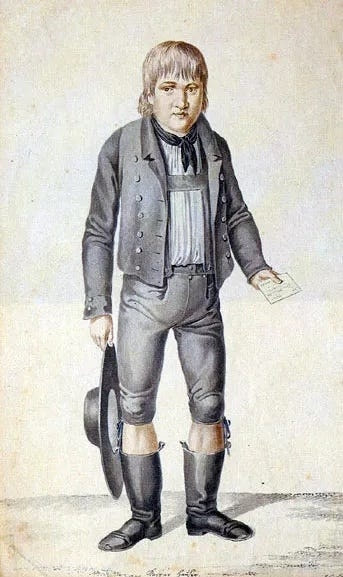

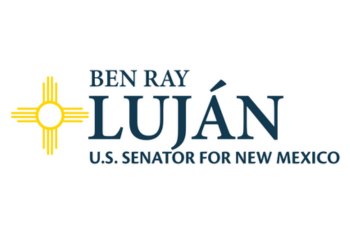
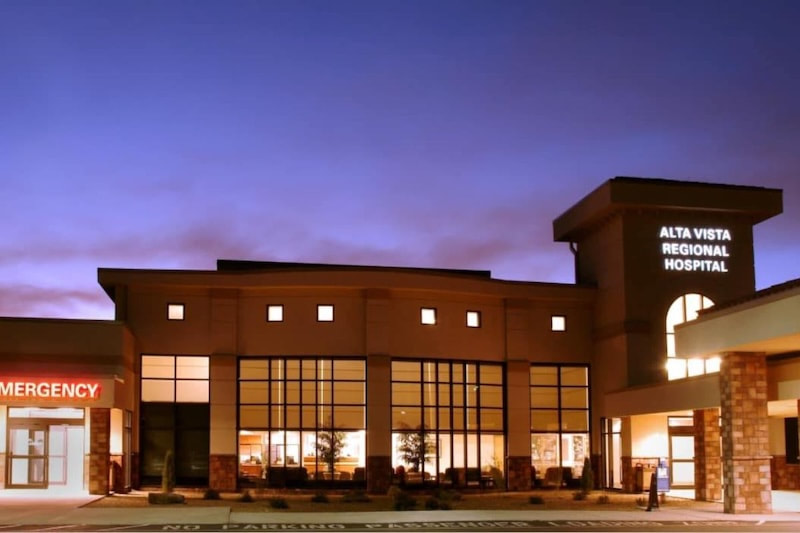

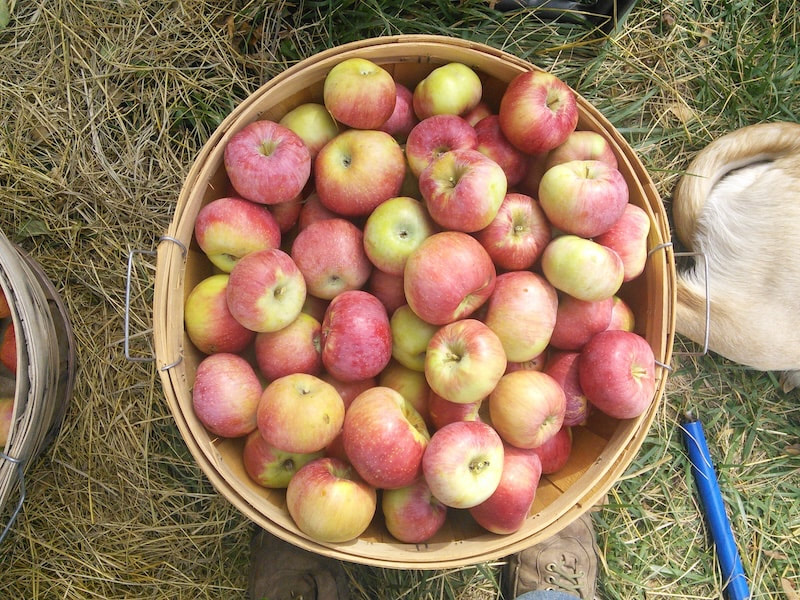
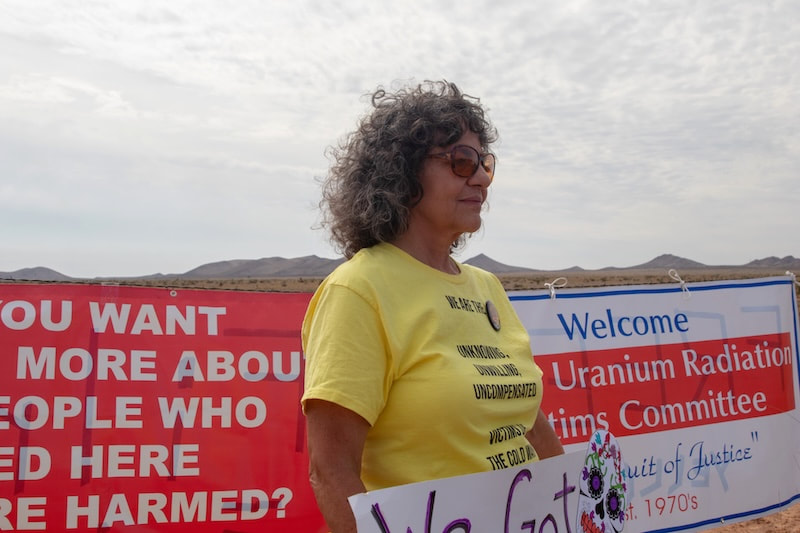
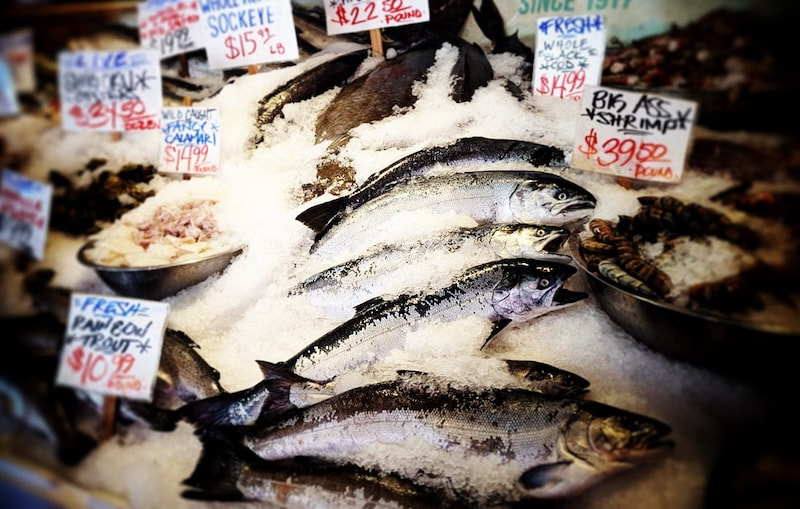
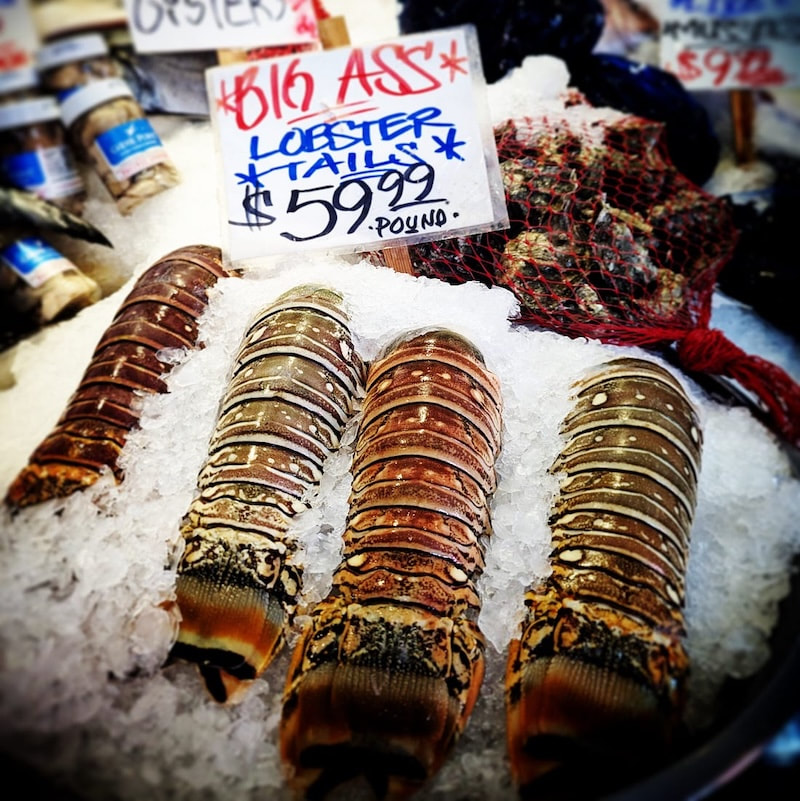
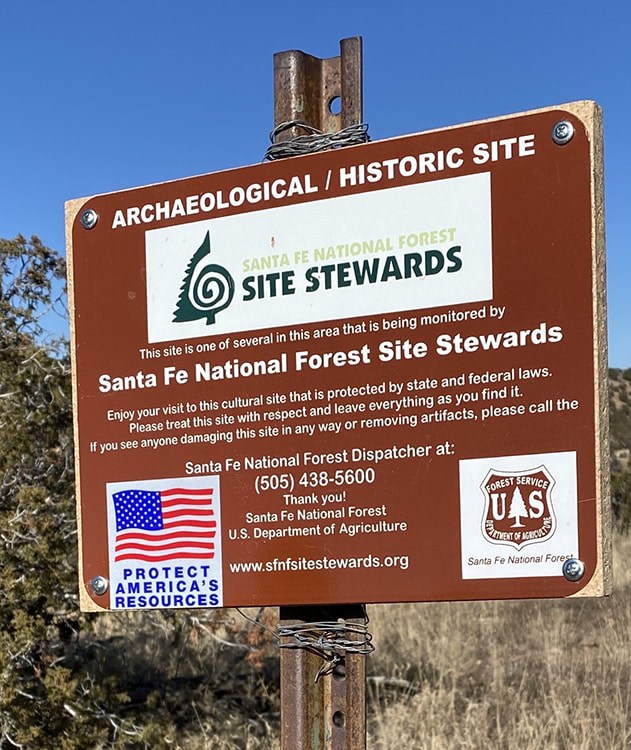
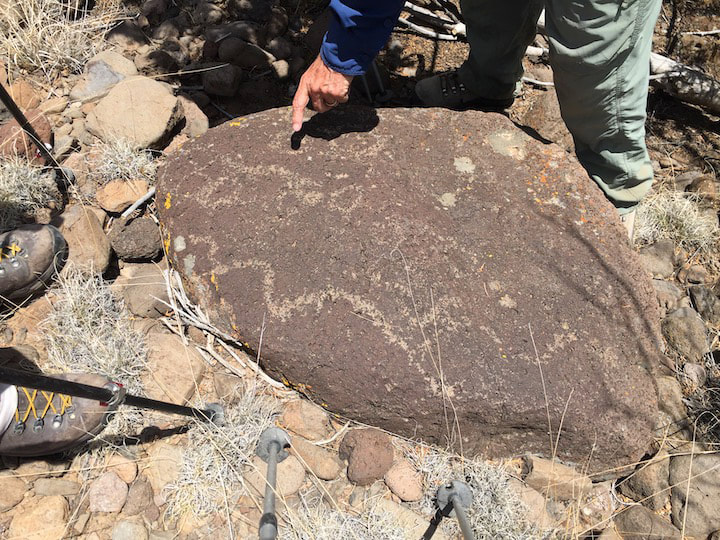
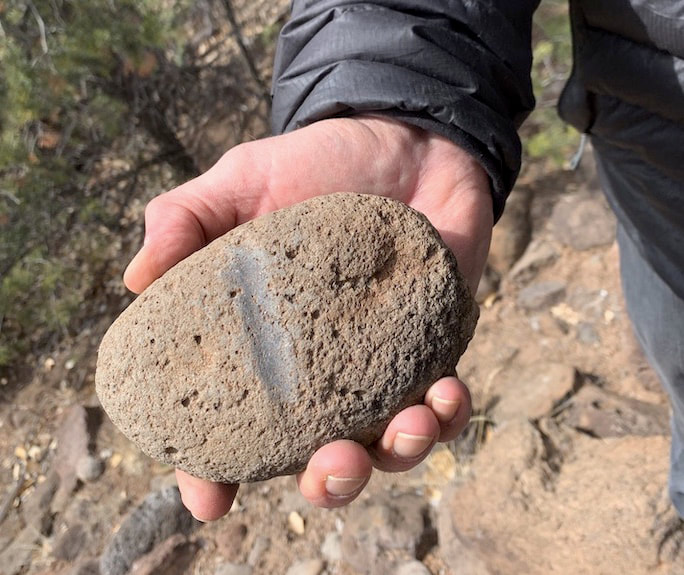
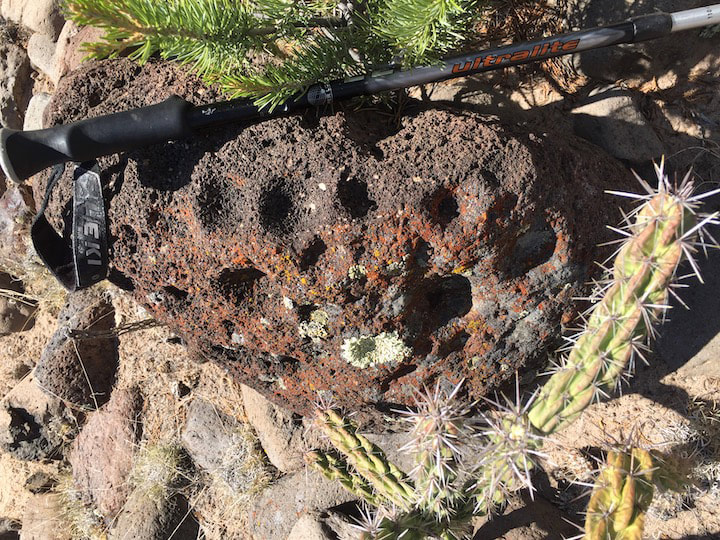
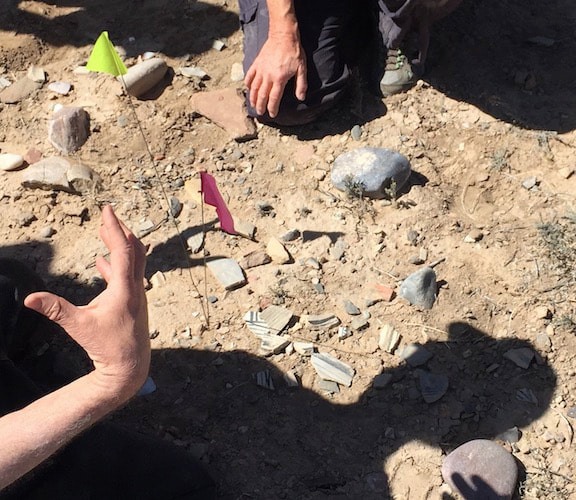
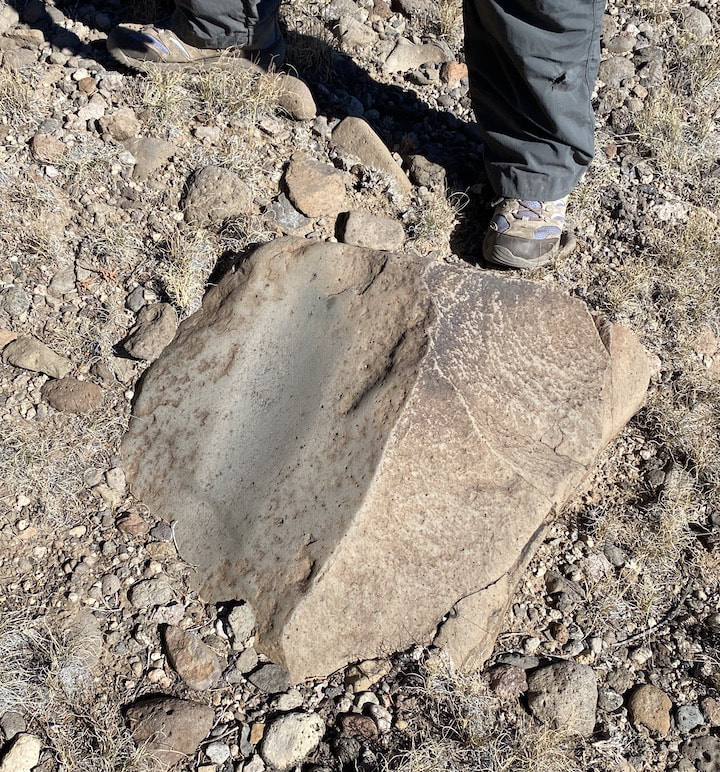
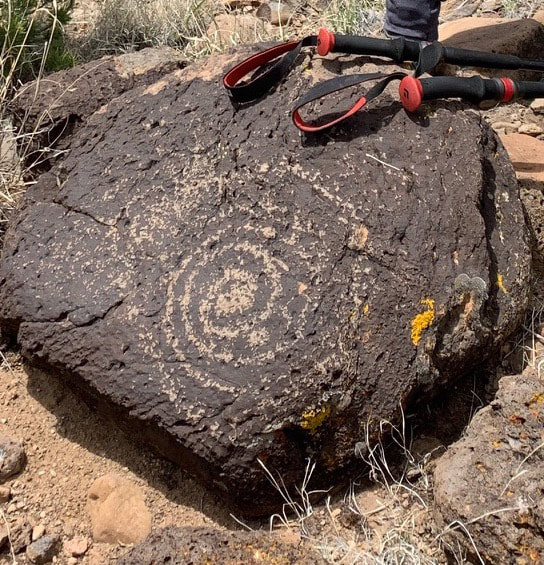


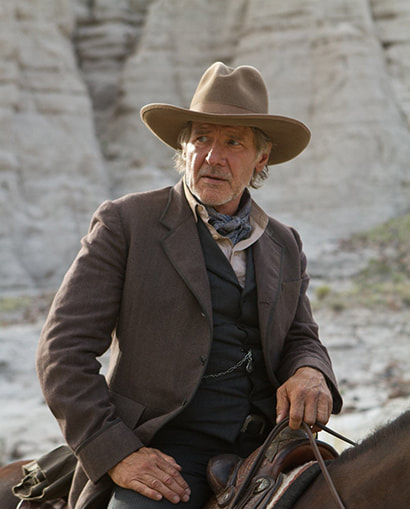

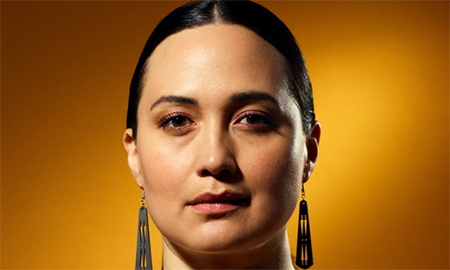
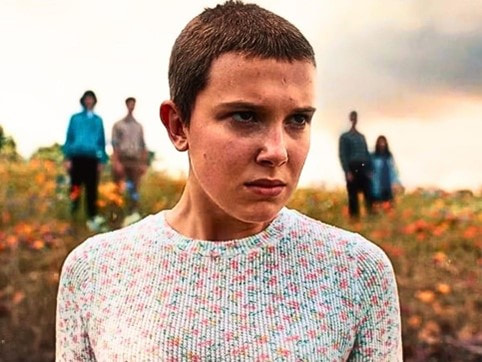
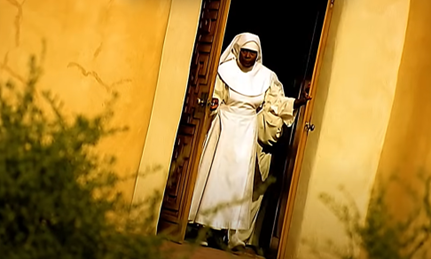
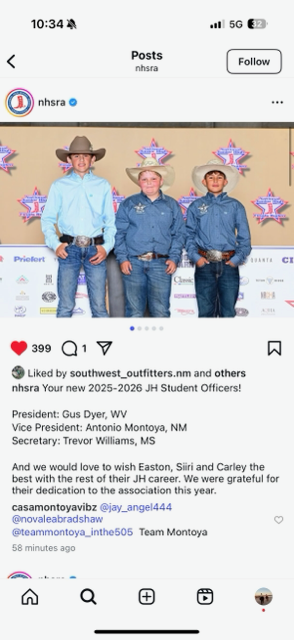
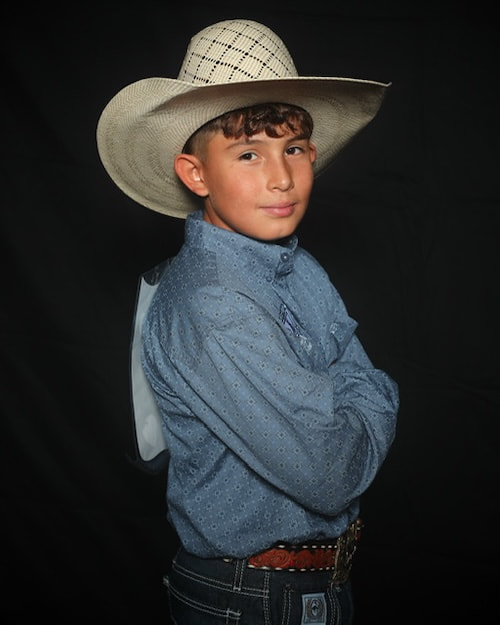
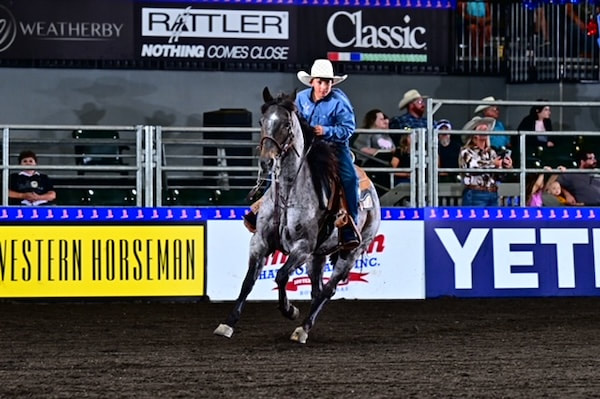
 RSS Feed
RSS Feed